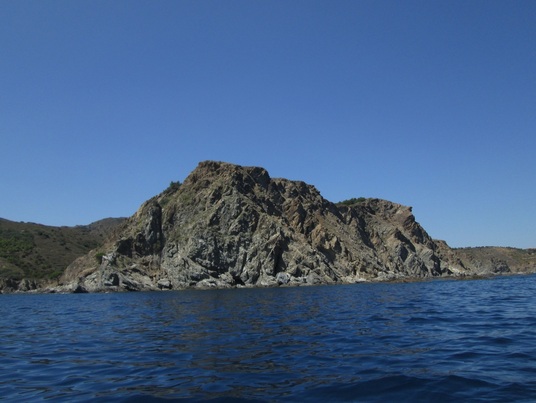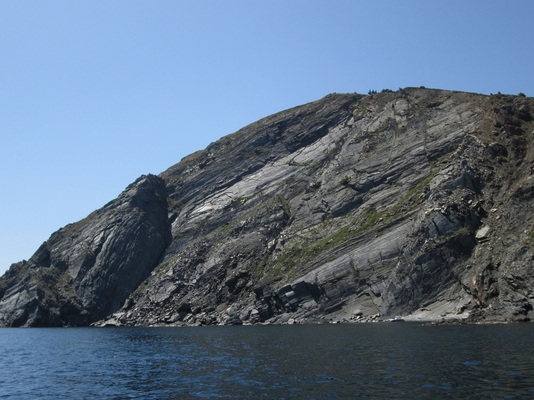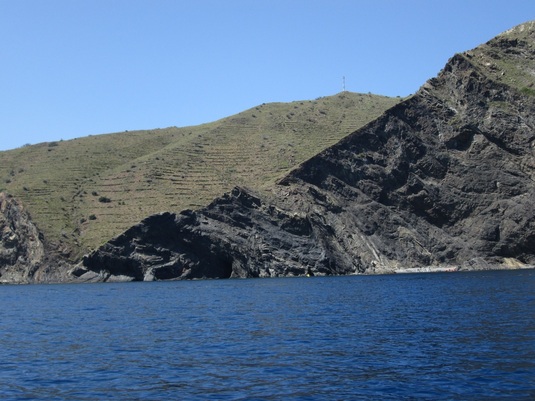Martine having duly returned, we went out again in the boat yesterday, a truly lovely day. We drove that extra little bit, and launched at Banyuls. As usual, we pottered about, moored for a while and swam, and generally had a wonderful time looking around. We went further south than we have before, down the coast to Port Bou and slightly further. The main benefit of going further south is that the coast simply gets more amazing as you go. Down there, there are some astonishingly contorted crags, some stacks and caves, but the main thing to note is that the rock itself seems to get blacker and more dramatic the further south you go.
It still seems to be metamorphic rock, like the coast nearer Collioure, and you can see more clearly the complex and folded nature of its structure. Folds and faults and igneous intrusions are all visible, just all done in black! A few photos will illustrate the grandeur of this rock scenery.
And, as I indicated, there are small caves; and in the small caves, right on the water of the translucent Mediterranean, there are swifts, cave-dwelling swifts. As far as I can see, these must be the ordinary swift (martinet noir/ apus apus), as even in the intense sunlight, they looked very dark with no significantly lighter patches under the chin. Even though I knew that swifts are as much rock-dwellers as dwellers among buildings, it was thrilling to see them issue from the caves in these black cliffs into the bright sunlight, flying in screaming groups over the shining sea.



